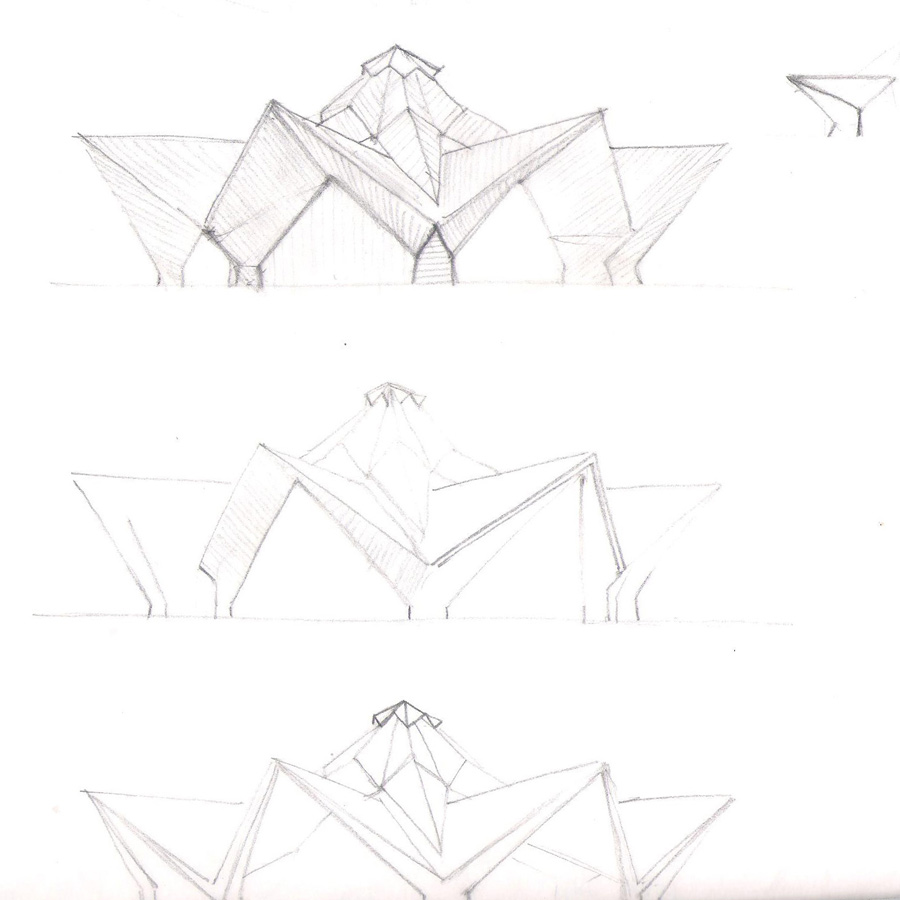In recent years, the Bahá’í Faith has emerged as a beacon of hope and unity across diverse cultural landscapes. One of the most exquisite manifestations of this spirit is embodied in Colombia’s Bahá’í House of Worship. This architectural marvel is more than a mere structure; it represents the convergence of spirituality, art, and social cohesion. An exploration of this temple, interlaced with the reflections of its architect, reveals profound insights into the Bahá’í teachings and their architectural embodiment.
The essence of the Bahá’í Faith revolves around the tenets of universal love, the oneness of humanity, and the pursuit of justice. In essence, it espouses a vision of a cohesive world where individuals, irrespective of their backgrounds, collaboratively foster peace and understanding. The Colombia Bahá’í House of Worship serves as a tangible fruition of these principles, providing a space not only for individual contemplation but also for collective gatherings.
Architecturally, the House of Worship is an awe-inspiring synthesis of modern design and traditional motifs. It is characterized by its distinctive nine-sided structure, a conceptual embodiment of the Bahá’í belief in the significance of the number nine—symbolizing completeness and unity. Each side of the building delights in intricate panels that filter light, allowing natural illumination to dance within its sacred interior. The architectural vision captures a distinct ethos of harmony, reflecting both the divine and the earthly realms.
The architect’s reflections clarify how each element of design is an intentional representation of Bahá’í principles. For instance, the positioning of the Temple in a geographical context symbolizes openness and accessibility. Its location is a sanctuary amidst nature, inviting individuals from all walks of life to engage in spiritual reflection. This is significant as it aligns with Bahá’í teachings regarding the connection between humanity and the environment, underscoring stewardship of the Earth.
As one delves into the experience within the House of Worship, it becomes apparent that this space serves multifaceted roles. Visitors can engage in individual prayer and meditation, absorb the surrounding beauty, or participate in various community activities. This multi-use functionality exemplifies the Bahá’í commitment to fostering a culture of learning and development. Educational programs often take place within the temple grounds, emphasizing the importance of knowledge and enlightenment as pathways to peace.
The architectural language employed embodies an ethereal quality, where simplicity meets grandeur. Natural materials were meticulously selected to evoke a organic resonance with the surrounding environment. The architect’s deliberate choice to incorporate local materials reflects the vision of sustainability and respect for local culture. Such choices not only enhance aesthetic appeal but also reinforce the message of unity through diversity—a foundational Bahá’í belief.
Furthermore, the role of the House of Worship extends beyond religious observance; it encapsulates a commitment to the arts. Art exhibitions and musical performances are frequently held, celebrating local artists and engaging the community. This artistic dimension enriches the spiritual experience and highlights the Bahá’í teaching that art and beauty are critical to the human experience. A gathering space for dialogue and creativity, the temple encourages the assertion that spiritual and artistic expressions are inexorably linked.
An important aspect of the Temple’s role is its function as a catalyst for social engagement. The architect suggests that the design incorporates spaces conducive to interfaith dialogue and community outreach. This aligns perfectly with the Bahá’í emphasis on fostering connections across different faiths and cultures. This is palpable in the structure itself; it is an invitation to come together to explore common values and shared aspirations, setting the stage for collaborative community projects.
Moreover, the structure is designed to be environmentally conscious, echoing the Bahá’í teaching of respect for nature. The incorporation of energy-efficient technologies and water conservation systems enhances its sustainability. Thus, the House of Worship not only conveys spiritual messages but also embodies an ecological consciousness that resonates with contemporary concerns about the environment.
As visitors engage with the temple, they are enveloped in an ambiance resonating with contemplation and peace. The architect’s reflections emphasize that the experience is inherently transformative. The space is intentionally curated to evoke an emotional response, where silence invites introspection and dialogue fosters community building. Such an atmosphere is synonymous with the core teachings of the Bahá’í Faith, as it strives to create environments filled with love, understanding, and unity.
In conclusion, Colombia’s Bahá’í House of Worship stands as a profound manifestation of the Bahá’í teachings and an example of architectural excellence. The architect’s reflections illuminate the harmonious relationship between design and spirituality, demonstrating that architecture can indeed be a conduit for divine principles. With its commitment to inclusivity, environmental sustainability, and communal engagement, this Temple not only serves as a place of worship but also as a vibrant hub for cultural exchange and social transformation. Through this magnificent structure, the Bahá’í Faith continues to propel our understanding of unity, love, and justice forward, creating ripples of positive change throughout society.
